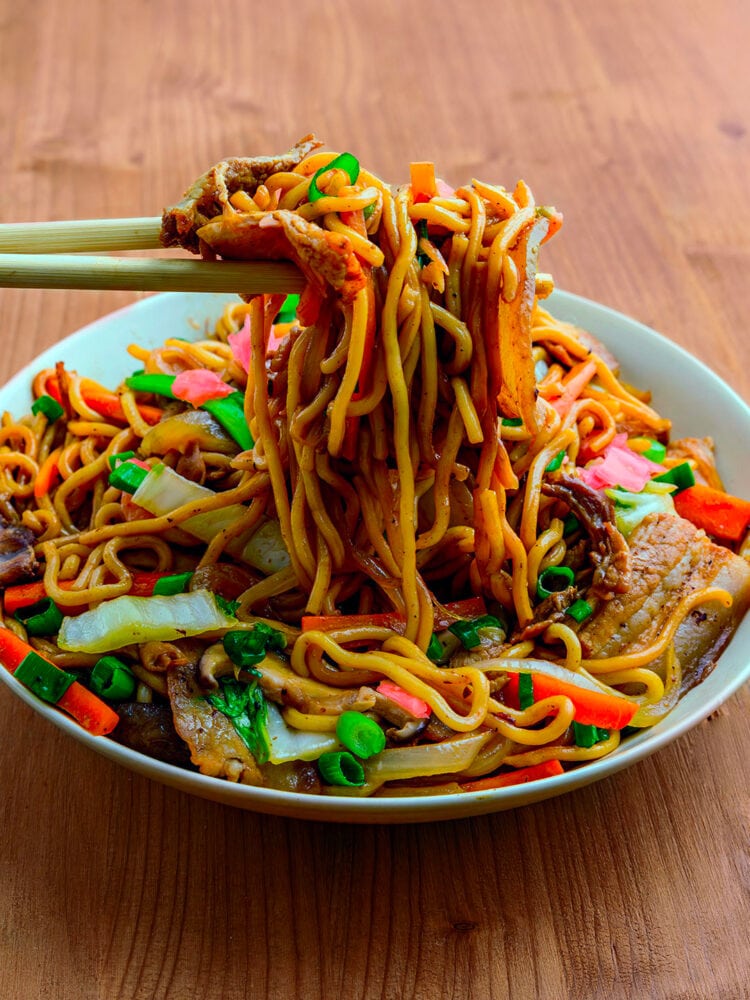Yakisoba is a classic Japanese street food, consisting of soft noodles stir-fried with thin slices of pork and fresh vegetables in a tangy sauce. Enjoy authentic Yakisoba at home with this quick recipe that takes less than 30 minutes!
What is Yakisoba?
Not to be confused with my delicious Yaki Udon, Yakisoba (焼きそば) is also a Japanese stir-fried noodle dish. It typically consists of meat or seafood and an assortment of vegetables such as cabbage, carrots, onions, and bean sprouts.
These ingredients are carefully mixed and cooked in a rich and creamy sauce that is both sweet and salty, but also tangy. To perfect this dish, it is commonly garnished with aonori, a dried green seaweed, and pickled red ginger, adding extra flavor notes.
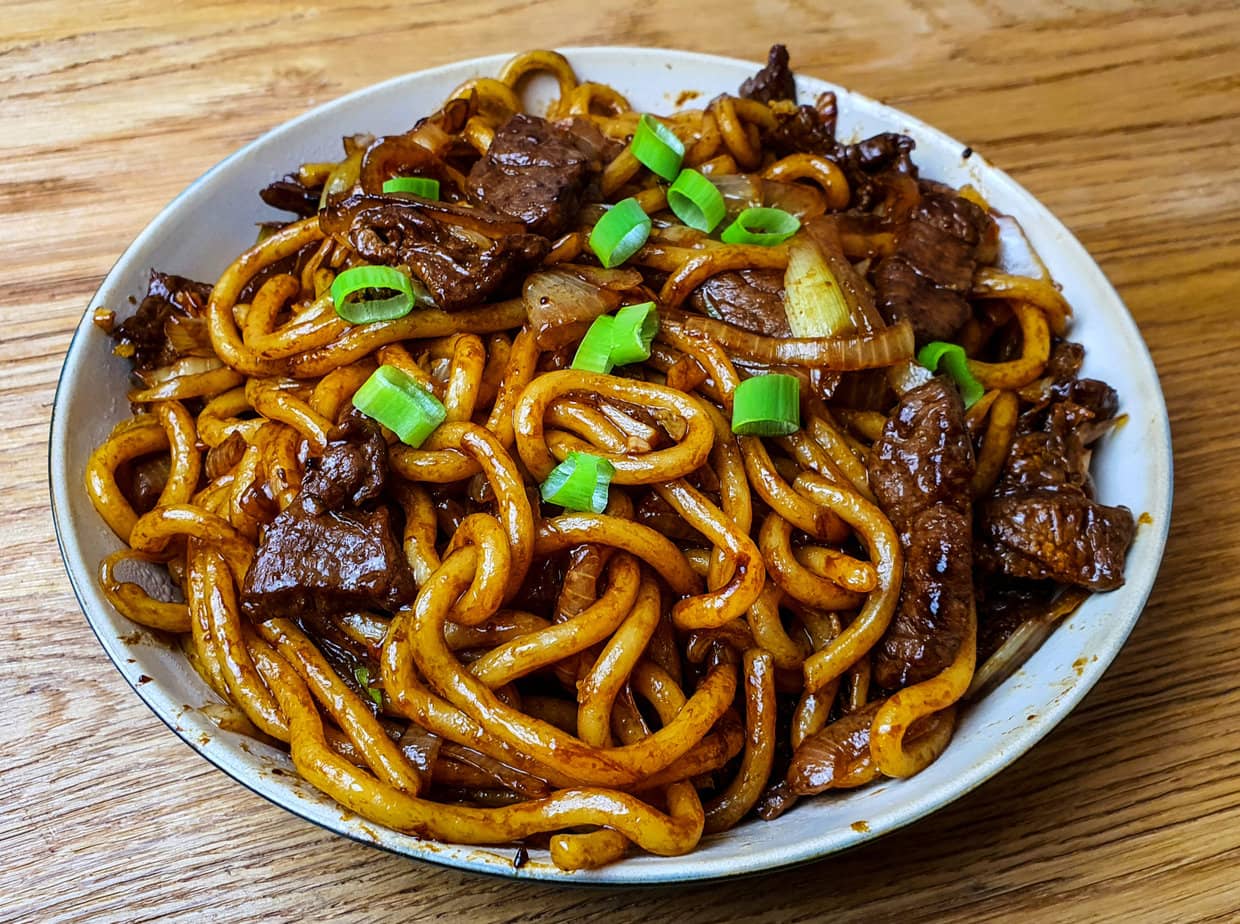
The History of Yaki Soba
Yakisoba has its roots in Asakusa during the “Taisho era, a period marked by the” establishment of the first Chinese noodle factories. According to Shogo Shiozaki, a food history researcher, yakisoba was originally conceived as a clever variation of okonomiyaki, a type of Japanese savory pancake.
The two dishes share several similar ingredients, including meat or seafood, various vegetables, and a tangy Worcestershire-based sauce. The main difference lies in the replacement of the flour-based batter, typical of okonomiyaki, with noodles in yakisoba.
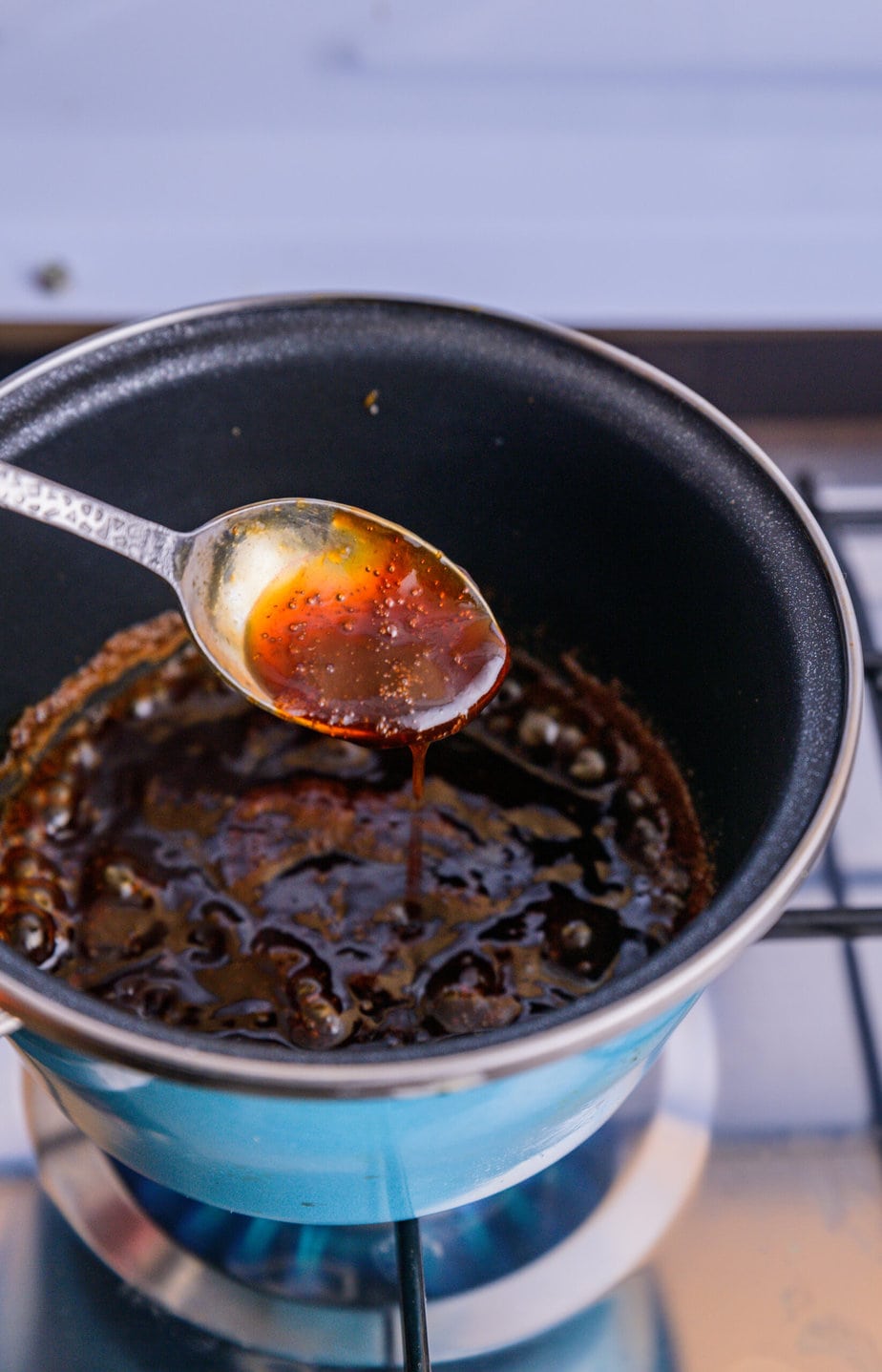
This dish quickly won the hearts of children. Initially a staple of street food stands, yakisoba then established itself as a common choice in Japanese diners, called Teishoku-ya, and even in candy stores known as dagashi-ya.
Its popularity in school establishments and at various events such as festivals and fairs is partly explained by the ease of preparation on a teppan, an iron hot plate. Today, yakisoba is considered a true symbol of Japanese cuisine.
Do We Use Soba Noodles in Yakisoba?
Surprisingly, no. Yakisoba noodles are very different from buckwheat-based soba noodles. In Japanese, the term “soba” generally refers to different types of noodles, including chuka soba for ramen and yakisoba.
Contrary to what its name might suggest, yakisoba is not prepared with buckwheat noodles (traditional soba). Instead, Chinese-style noodles known as mushi chukamen (蒸し中華麺) are used, as in mazesoba.
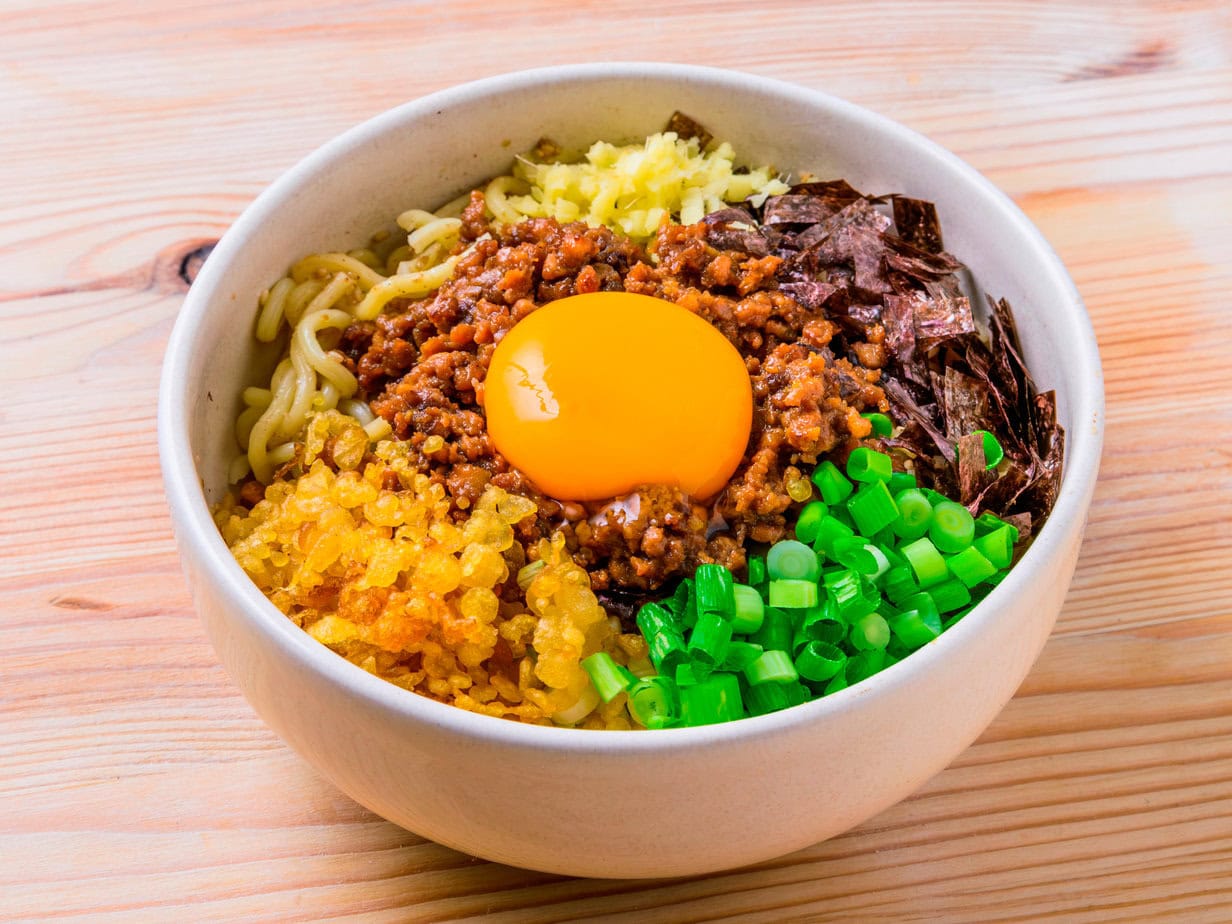
These noodles are made from wheat flour, kansui (a type of alkaline water), and water. The kansui gives the noodles a yellowish color, although they don’t contain eggs. These noodles have a texture similar to ramen noodles and are pre-steamed for quick reheating.
The Main Ingredients of Yakisoba
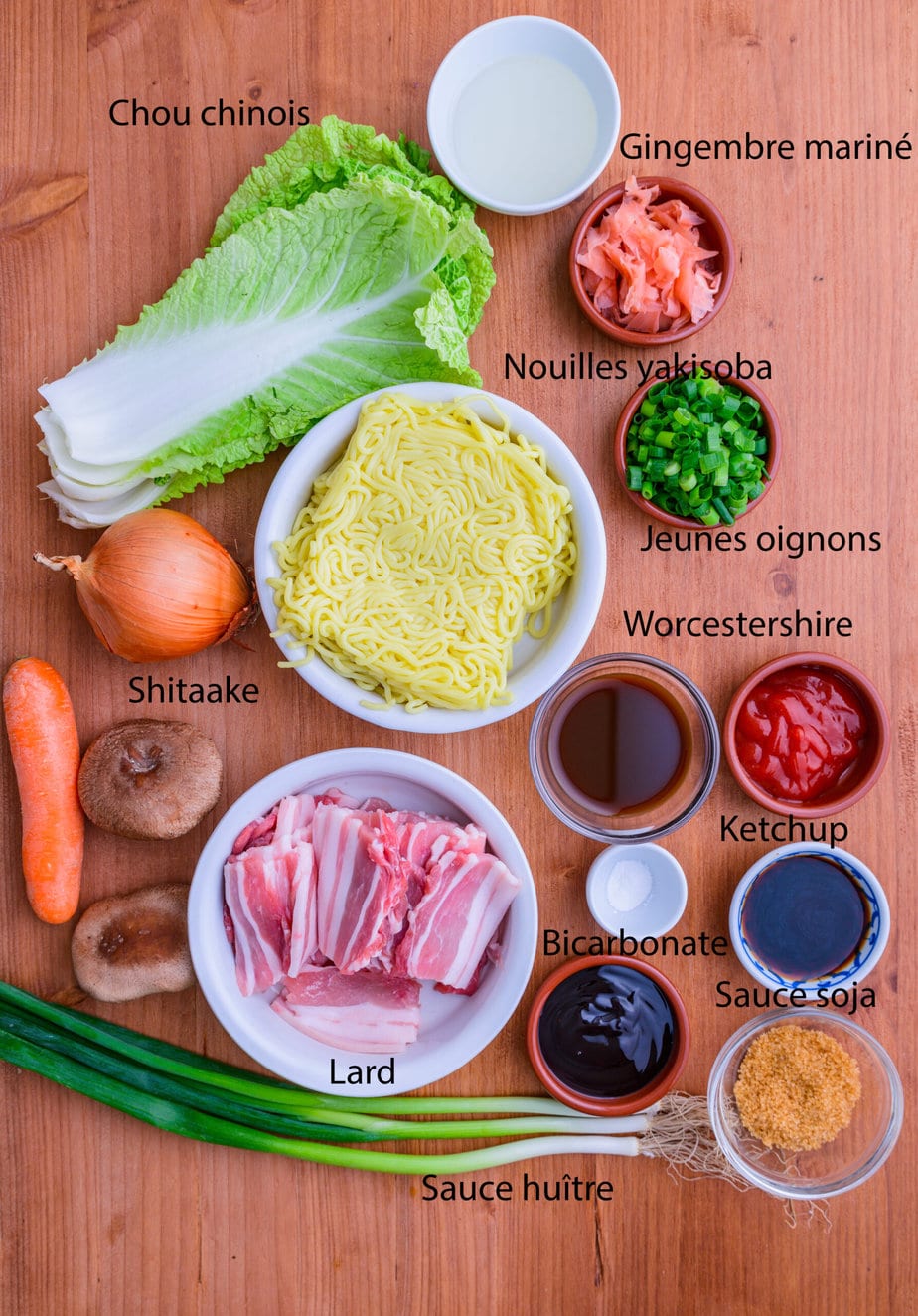
Baking Soda: Acts as an acidity regulator, balancing the acidic flavors of other ingredients in the sauce. It’s not an orthodox ingredient, I think I’m the only blog to include it, but in my tests, it added a lot to the flavor of the sauce.
Worcestershire Sauce: Brings a complex umami flavor with slightly sweet, sour, and spicy notes.
Oyster Sauce: Offers a depth of umami flavor and slight sweetness, adding richness to the sauce.
Light Soy Sauce: Provides saltiness and umami, contributing to the color and depth of the sauce.
Aonori (dried green seaweed): Adds a sea note and subtle umami taste, while providing an attractive color to the dish.
Pickled red ginger: Provides a tangy and refreshing touch, contrasting with the rich and umami flavors of yakisoba.
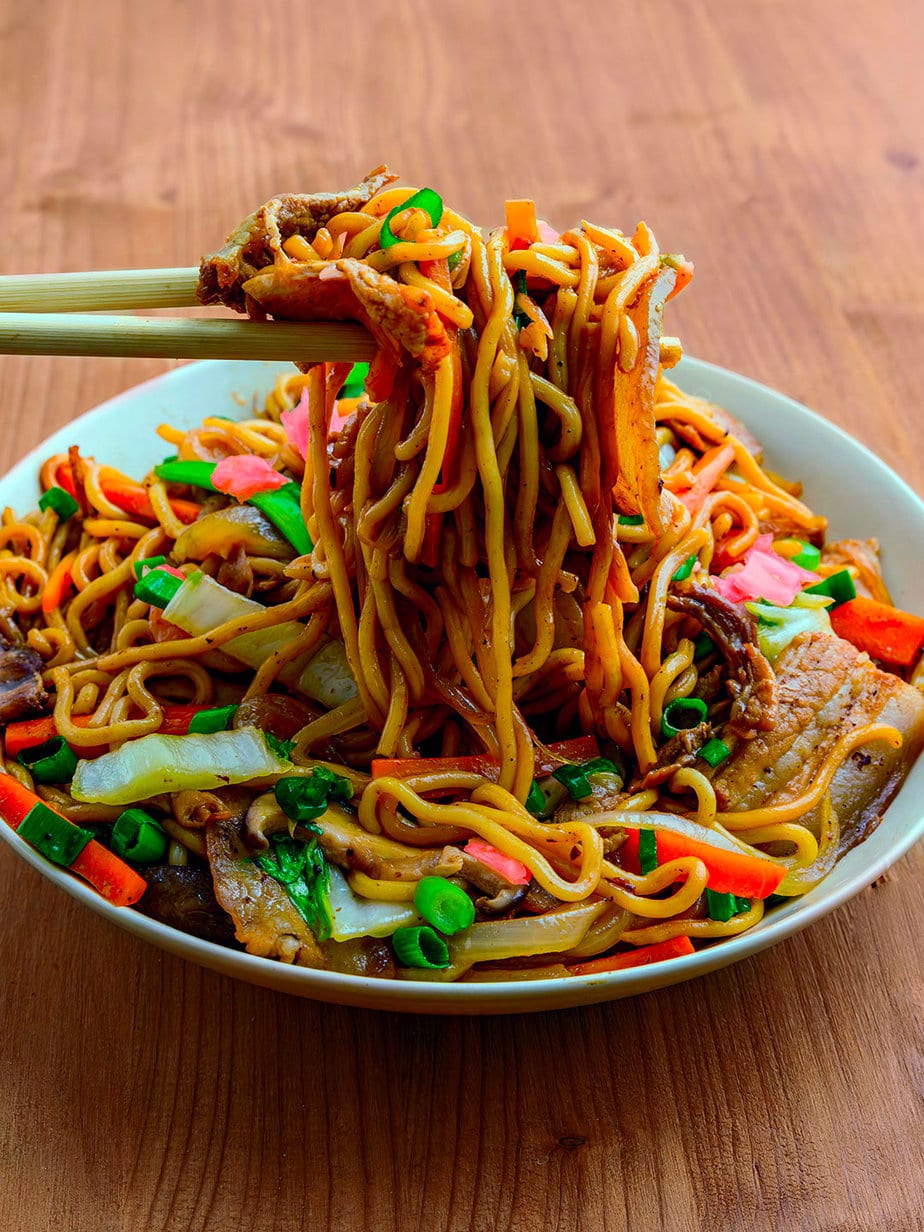
Authentic Yakisoba – Japanese Stir-Fried Noodles
Equipment
- 1 Wok
Ingredients
Yakisoba Sauce
- 1 pinch bicarbonate
- 40 ml of Worcestershire sauce
- 4 teaspoons of oyster sauce
- 4 teaspoons ketchup
- 5 teaspoons light soy sauce
- 4 teaspoons of sugar
Yakisoba
- 300 g of thinly sliced pork belly unsalted
- 1 sliced onion
- 10 cm of carrot cut into thin strips
- 4 leaves of Chinese cabbage sliced
- 3 green onions cut into segments
- 2 shiitake mushrooms sliced, stems removed
- 3 tablespoon of oil for the wok
- 2 portions of pre-cooked yakisoba noodles
- All the yakisoba sauce
Toppings
- aonori dried green seaweed
- pickled red ginger
Instructions
- Gather all ingredients.
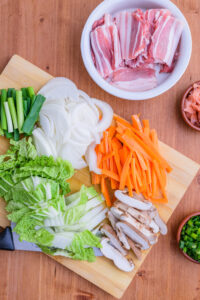
Yakisoba Sauce
- Mix all sauce ingredients in a saucepan
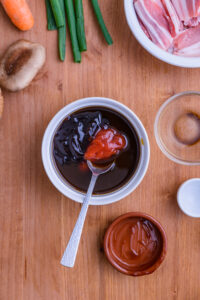
- Bring to a boil over medium heat, reduce to low heat and let simmer for 5 min.
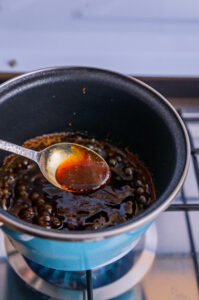
- The sauce should have a syrupy texture
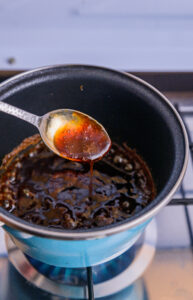
- Set aside
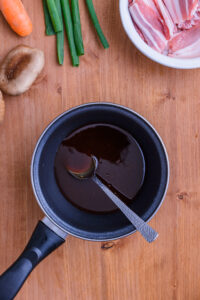
To Cook the Pre-cooked Noodles
- Heat water in a saucepan until boiling
- Add the noodles. Gently separate them, drain as soon as they’re ready
For the Yakisoba
- In the hot wok, add the pork belly. Fry until it’s no longer pink.
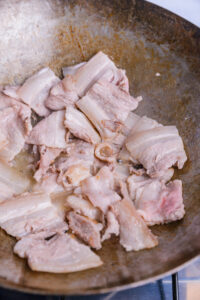
- Add the onion, then the carrot, and cook for a few minutes.
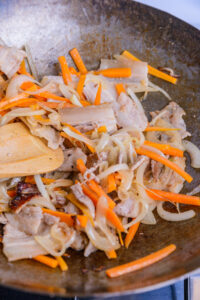
- Add the cabbage and mushrooms. Cook until they’re almost tender.
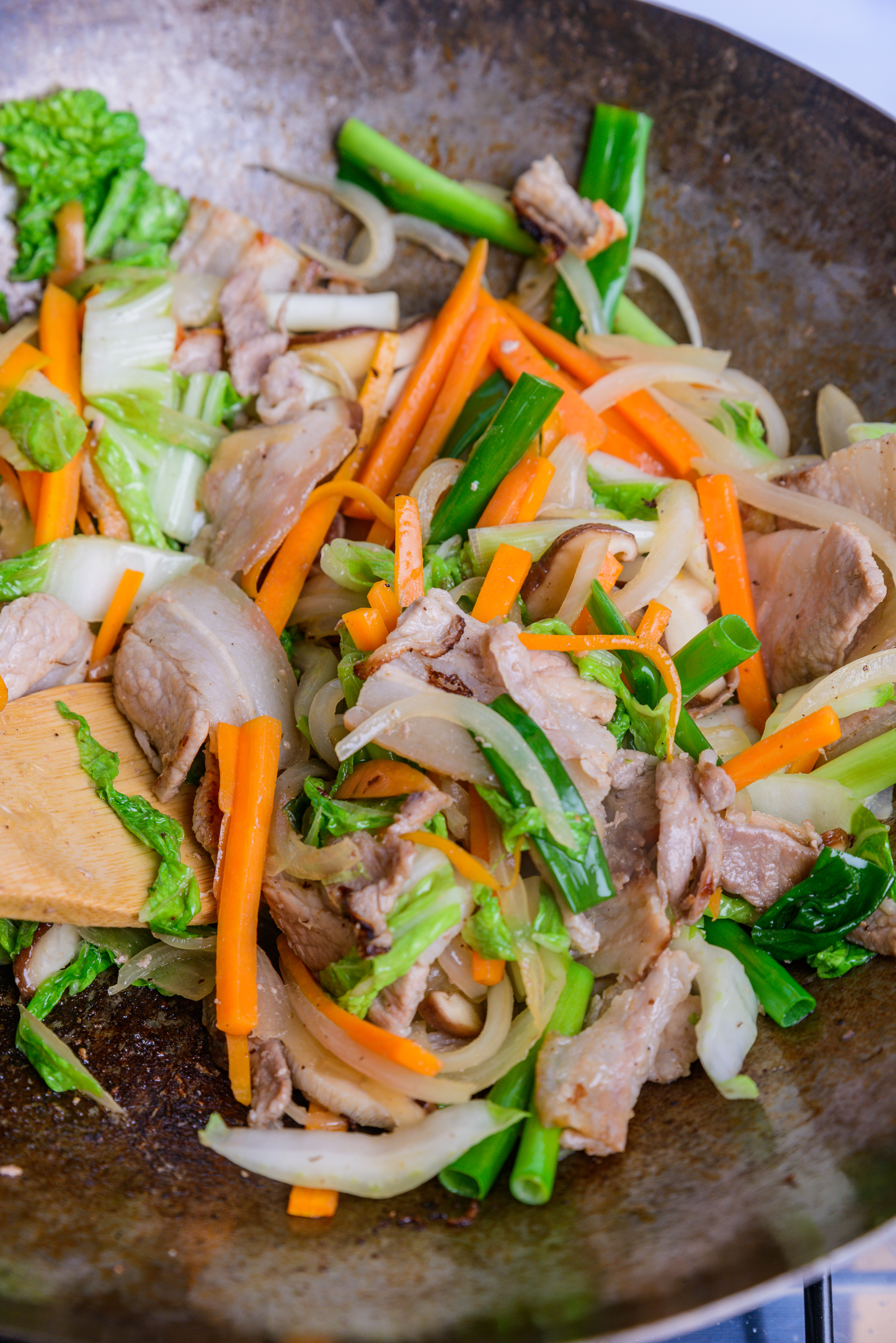
- Add the green onions and cook for 1 minute.
- Put the noodles on the grill, add the yakisoba sauce
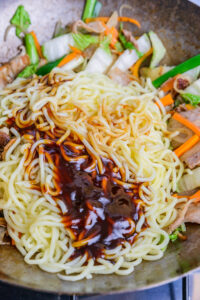
- Stir-fry for a few more minutes.
- Garnish with aonori and ginger, serve
